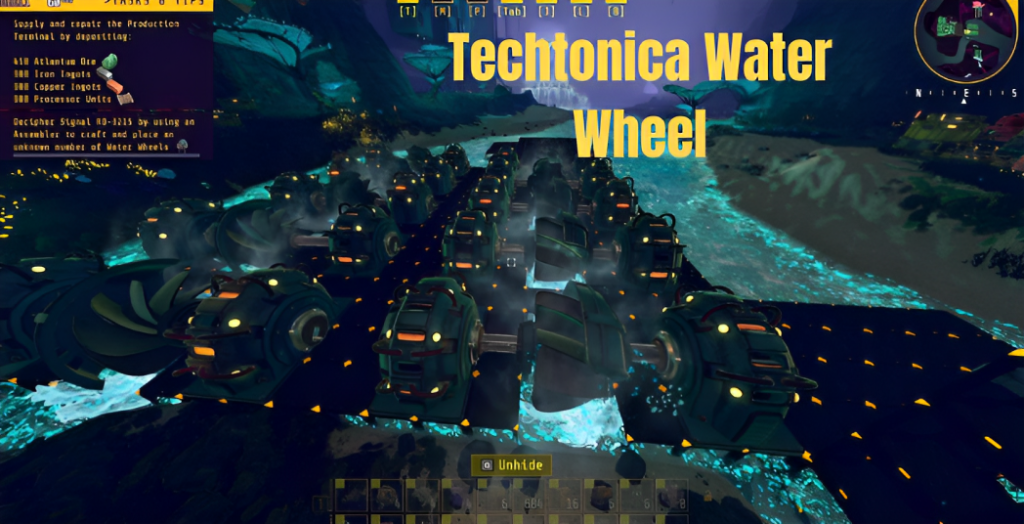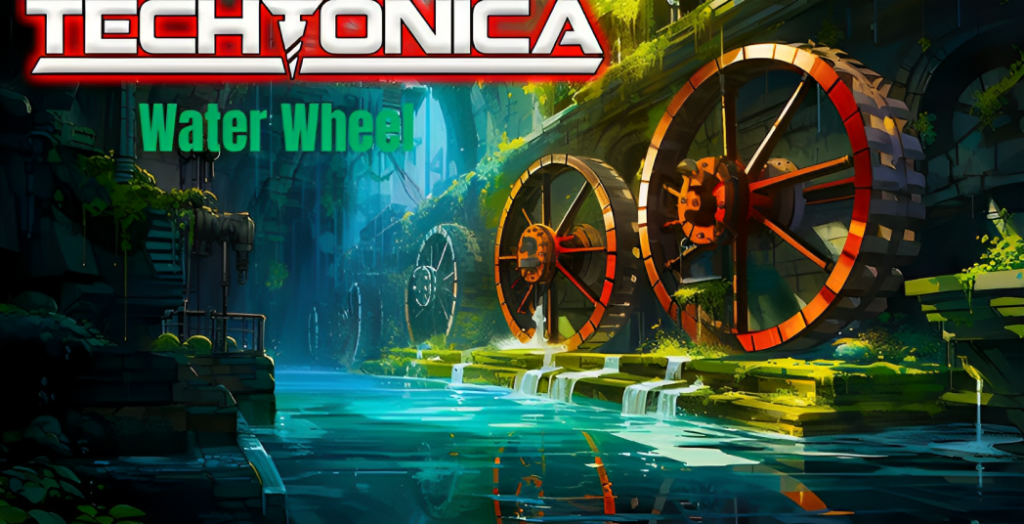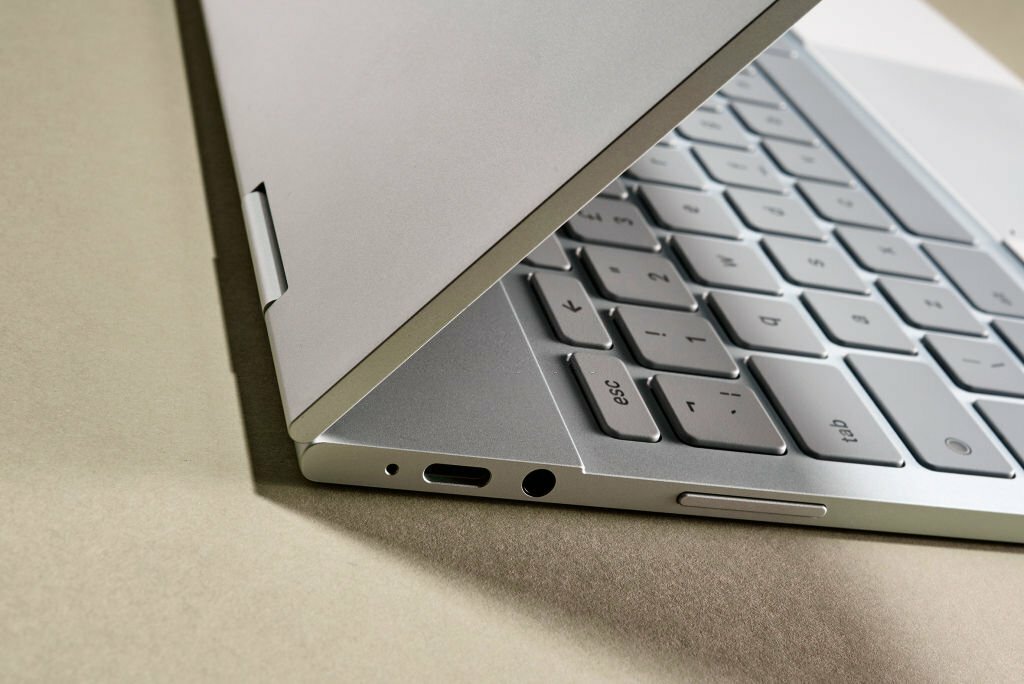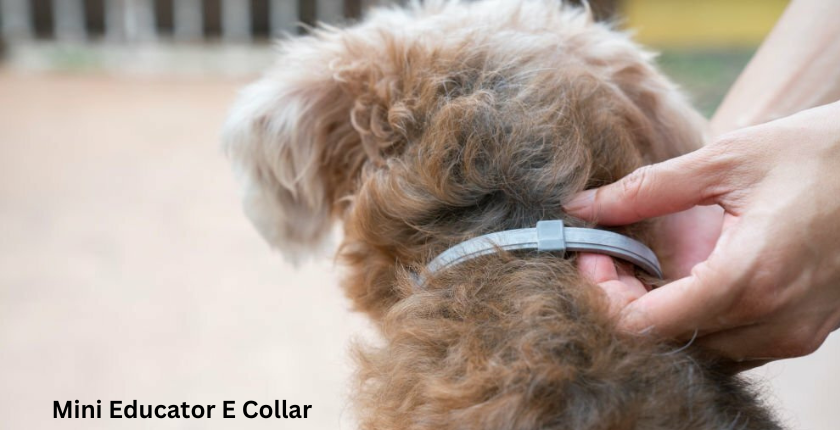Techtonica Water Wheel: Revolutionizing Sustainable Energy
Table of Contents
Techtonica Water Wheel, Transforming Hydrokinetic Energy. Clean, modular design generates electricity from rivers and ocean currents. Revolutionize sustainable power today!
Global demand for renewable energy is rising, with a focus on alternatives to fossil fuels. The Techtonica Water Wheel is an innovative solution, that uses hydrokinetic technology to generate clean electricity from moving water. Unlike traditional hydropower, it doesn’t need dams, making it more environmentally friendly. Its modular and scalable design makes it suitable for remote areas and small-scale applications.
How The Techtonica Water Wheel Works
The brilliant design of the Techtonica Water Wheel allows it to efficiently convert the natural flow energy of rivers and ocean currents into usable electricity. It consists of a large wheel fitted with rotational generators that sit vertically on the riverbed or seabed.
As the water current pushes past, the force of the flowing water causes the wheel to spin. This rotational motion drives the integrated generators, which in turn, convert the kinetic energy into electrical energy. The power produced is transmitted via underwater cables to connect with the electrical grid or to power off-grid applications.
Some key innovations make the Techtonica Water Wheel exceptionally effective at tapping into hydrokinetic power:
- Bi-directional generators – Allows the wheel to generate electricity from water flowing in either direction
- Modular and scalable design – Wheel capacity can be expanded through added generator units
- Durable materials – Built to withstand constant water pressure and debris impact
- Submerged positioning – Places the apparatus directly in the strongest currents below the water surface
- Minimal ecological impact – Does not obstruct natural water flow patterns or aquatic life migration

Unlocking New Potential for Clean Hydrokinetic Power
The Techtonica Water Wheel generates clean energy from rivers, channels, and ocean currents. A single unit produces 500 kW, powering over 400 homes. Arrays can scale up for megawatt production, surpassing traditional hydropower. Its modular design suits unconventional locations, avoiding the need for large dams or water diversion.
Rivers and Ocean Currents Offer Abundant Hydrokinetic Resources
The Techtonica Water Wheel design holds great potential for expanding global clean hydrokinetic generation. Promising sites with sufficient water flow have been identified worldwide, including over 300,000 potential hydrokinetic power sites along inland waterways in the United States alone. Oceans, such as the Florida Current in the Gulf Stream, offer significant opportunities, with the potential for over 4 gigawatts of renewable electricity. The Techtonica Water Wheel is well-suited for placement in tidal channels, river mouths, and downstream from dams, tapping into high-velocity currents for 24/7 renewable energy generation.
Overcoming Challenges for Widespread Adoption
While the potential is promising, there are still some technological and economic challenges to be addressed before hydrokinetic power achieves widespread adoption.
The saltwater environment of ocean currents can degrade equipment over time. The Techtonica Water Wheel aims to overcome this through its durable construction. However, longer-term real-world performance data is needed. There are also regulatory uncertainties that cloud project timelines and access to optimal sites with the highest energy generation capabilities.
Cost-competitiveness with conventional energy sources is another current limitation. However, the developers of the Techtonica Water Wheel expect manufacturing improvements and economies of scale to bring down project costs significantly as adoption accelerates. Its modular approach also allows for more affordable small-scale installations.
Read also: Nickel with No Face

Powering Remote Communities Sustainably
Meanwhile, the Techtonica Water Wheel is already helping enable clean off-grid power access for rural and Indigenous communities located near suitable hydrokinetic resources.
For example, a river installation is supplying the remote village of Kinbasket in British Columbia with a locally generated source of renewable electricity. Previously reliant on dirty diesel generators, the community now has a sustainable mini-grid powered by water-wheel-generated electricity. Several similar off-grid projects are underway worldwide thanks to the unique advantages of the Techtonica Water Wheel technology.
Building Momentum for Next-Generation Hydrokinetic
With its disruptive design and capabilities, the Techtonica Water Wheel represents an exciting advancement in hydrokinetic technology. As this innovative solution gains traction around the world, the opportunity to tap into Earth’s natural water currents as a stable source of renewable energy comes closer to realization. Driven by emerging technologies like the Water Wheel, hydrokinetic power promises to open up vast new horizons in clean energy production globally. The potential for this constantly renewing energy resource is only beginning to be unlocked.
Final Words
The Techtonica Water Wheel offers an ingenious new approach to harnessing the renewable power of water currents. By directly converting the kinetic energy of rivers and oceans into electricity, this technology enables stable clean energy production without environmental disruption. As researchers identify optimal locations to implement these modular hydrokinetic systems, the Techtonica Water Wheel paves the way for the immense potential of water flow-driven power generation to be realized. With innovators like Techtonica at the forefront, hydrokinetic technologies promise to transform how we produce emissions-free electricity worldwide. The Water Wheel’s revolutionary design is leading the way in developing the next generation of sustainable hydropower solutions.
People Also Ask
Where are the water wheels in techtonica?
Techtonica’s water wheels are scattered throughout the region, powering various installations depending on their size and type. Look for them near rivers, waterfalls, or dedicated reservoirs. Specific locations may vary based on current projects and maintenance needs.
What is the best type of water wheel?
It depends on the water flow and desired power output. Undershot wheels excel in slow-moving rivers, while overshot wheels thrive with headwater drops. Breastholes offer versatility but sacrifice some efficiency. Ultimately, the ideal type hinges on Techtonica’s specific needs.
How many water wheels per crank generator?
The ratio depends on the generator’s capacity and the wheel’s power output. Typically, one large wheel drives a single generator, while smaller wheels might work in tandem for higher demands. Techtonica likely optimizes each installation based on efficiency and cost.
What is the theory of the water wheel?
Water wheels convert moving water’s kinetic energy into rotational force. Paddles or buckets capture the water flow, pushing against the wheel and causing it to spin. This rotation can then be harnessed for various purposes, like generating electricity or grinding grain.



